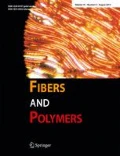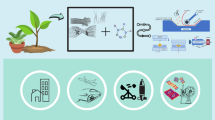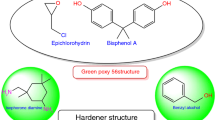Abstract
Plant based hemp fibre properties were found to be highly influenced by changes in the amounts of cellulose, hemicellulose and lignin constituents within the fibre. These fibre constituents play a major role for effective interfacial adhesion between the fibre and the matrix. Chemical treatments such as alkali (NaOH), acetyl (acetic acid & acetic anhydride) and silane (siloxane) treatments have the potential to react with constituent contents by varying their amounts. In this study, hemp fibre was treated with alkali (0–10 % NaOH), acetyl and silane chemicals. Treated fibres were mixed with polyester matrix to produce composites. The effects of chemical treatments on hemp fibres and the resulted polyester matrix composite were analysed through impact testing of the composite samples. Alkali treatments on hemp fibres enhanced the impact resistance properties (around 43 % lower absorbed energy and 40 % higher rebounded energy) of its composites compared to the untreated cases. Lower absorption energy and higher rebounded energy indicates strong interfacial bonding between the fibre and matrix. Improvements are governed by the removal of hemicellulose and lignin from the fibre, which provides a platform for better chemical reactions between fibres and matrix. On the other hand, acetyl treatments on the higher concentrations of NaOH pre-treated fibres reduced the fibres’ ability to support impact loadings (22 % higher rebounded energy compared to the untreated cases). In the two treatment conditions, fibre lessen their strength due to excessive removal of hemicellulose and lignin constituents, and composites exhibited lower impact properties compared to the NaOH treated samples. Similar impact properties were also recorded for alkali pre-treated silanised composites. As alkali pre-treatment removed the hydroxyl groups from the fibre, further silane treatment could not develop silanols to create strong interface bonding. As a result, composites failed under lower impact resistance compared to the NaOH treated samples.
Similar content being viewed by others
References
M. M. Kabir, H. Wang, K. T. Lau, and F. Cardona, Compos. Part B: Eng., 43, 2883 (2012).
M. M. Kabir, H. Wang, K. T. Lau, and F. Cardona, Compos. Part B: Eng., 53, 362 (2013).
M. M. Kabir, H. Wang, K. T. Lau, and F. Cardona, Appl. Surf. Sci., 276, 13 (2013).
M. M. Kabir, H. Wang, K. T. Lau, F. Cardona, and T. Aravinthan, Compos. Part B: Eng., 43, 159 (2012).
M. J. John and R. D. Anandjiwala, Polym. Compos., 29, 187 (2008).
X. Li, L. Tabil, and S. Panigrahi, J. Polym. Environ., 15, 25 (2007).
L. Y. Mwaikambo, N. Tucker, and A. J. Clark, Macromol. Mater. Eng., 292, 993 (2007).
D. Ray, B. K. Sarkar, A. K. Rana, and N. R. Bose, Bull. Mater. Sci., 24, 129 (2001).
G. Beckermann and K. L. Pickering, Compos. Part A: Appl. Sci. Manuf., 39, 979 (2008).
A. K. Bledzki, A. A. Mamun, M. Lucka-Gabor, and V. S. Gutowsk, eXPRESS Polym. Lett., 2, 413 (2008).
V. Tserki, N. E. Zafeiropoulos, F. Simon, and C. Panayiotou, Compos. Part A: Appl. Sci. Manuf., 36, 1110 (2005).
S. Mishra, A. Mohanty, L. T. Drzal, M. Misra, S. Parija, S. Nayak, and S. Tripathy, Compos. Sci. Technol., 63, 1377 (2003).
M. Sreekala, M. Kumaran, S. Joseph, M. Jacob, and S. Thomas, Appl. Compos. Mater., 7, 295 (2000).
Y. Seki, Materials. Sci. Eng.: A, 508, 247 (2009).
D. Delfosse and A. Poursartip, Compos. Part A: Appl. Sci. Manuf., 28, 647 (1997).
H. Hamada, S. Ramakrishna, and H. Satoh, Composites, 26, 749 (1995).
T. W. Shyr and Y. H. Pan, Compos. Struct., 62, 193 (2003).
S. R. Reid and G. Zhou, “Impact Behaviour of Fibre-reinforced Composite Materials and Structures”, CRC Woodhead Publishing Limited, 80 High Street, Sawston, Cambridge, CB22 3HJ, UK, 2000.
A. K. Mohanty, M. A. Misra, and G. Hinrichsen, Macromol. Mater. Eng., 276, 1 (2000).
H. Dhakal, Z. Zhang, and M. Richardson, Compos. Sci. Technol., 67, 1674 (2007).
J. Lojewska, P. Miskowiec, T. Lojewski, and L. M. Proniewicz, Polym. Degrad. Stabil., 88, 512 (2005).
F. Peng, J. L. Ren, F. Xu, J. Bian, P. Peng, and R. C. Sun, J. Agric. Food Chem., 58, 1768 (2009).
K. Wang, J. Jiang, F. Xu, R. C. Sun, and M. S. Baird, BioResources, 5, 1717 (2010).
Q. Liu, Z. Zhong, S. Wang, and Z. Luo, J. Anal. Appl. Pyrol., 90, 213 (2011).
H. Yang, R. Yan, H. Chen, D. H. Lee, and C. Zheng, Fuel, 86, 1781 (2007).
X. F. Sun, R. Sun, P. Fowler, and M. S. Baird, J. Agric. Food Chem., 53, 860 (2005).
O. David-West, D. Nash, and W. Banks, Compos. Struct., 83, 247 (2008).
K. Henkhaus, 16th ASCE Engineering Mechanics Conference: Proceedings of the 16th ASCE Eng. Mechanics Conf. Seattle, 16 (2003).
G. Belingardi, M. P. Cavatorta, and D. Salvatore Paolino, Intr. J. Impact Eng., 35, 609 (2008).
S. Ranganathan and P. R. Mantena, J. Reinf. Plast. Compos., 22, 671 (2003).
N. Fleck, P. Jelf, and P. Curtis, J. Compos. Tech. Res., 17, 212 (1995).
P. Jelf and N. Fleck, J. Compos. Mater., 26, 2706 (1992).
C. Gonzalez and J. Lorca, Compos. Sci. Tech., 67, 2795 (2007).
F. M. Jensen, B. Falzon, J. Ankersen, and H. Stang, Compos. Struct., 76, 52 (2006).
Acknowledgements
This project is supported by the Department of Education and Knowledge (ADEK), Abu Dhabi, United Arab Emirates and the University of Southern Queensland, Australia. The authors gratefully acknowledge to Dr. Mainul Islam, Ali Naim Khurshid and Wayne Crowell for providing helpful suggestions regarding this study.
Author information
Authors and Affiliations
Corresponding author
Rights and permissions
About this article
Cite this article
Kabir, M.M., Al-Haik, M.Y., Aldajah, S.H. et al. Impact Properties of the Chemically Treated Hemp Fibre Reinforced Polyester Composites. Fibers Polym 21, 2098–2110 (2020). https://doi.org/10.1007/s12221-020-9630-4
Received:
Revised:
Accepted:
Published:
Issue Date:
DOI: https://doi.org/10.1007/s12221-020-9630-4




